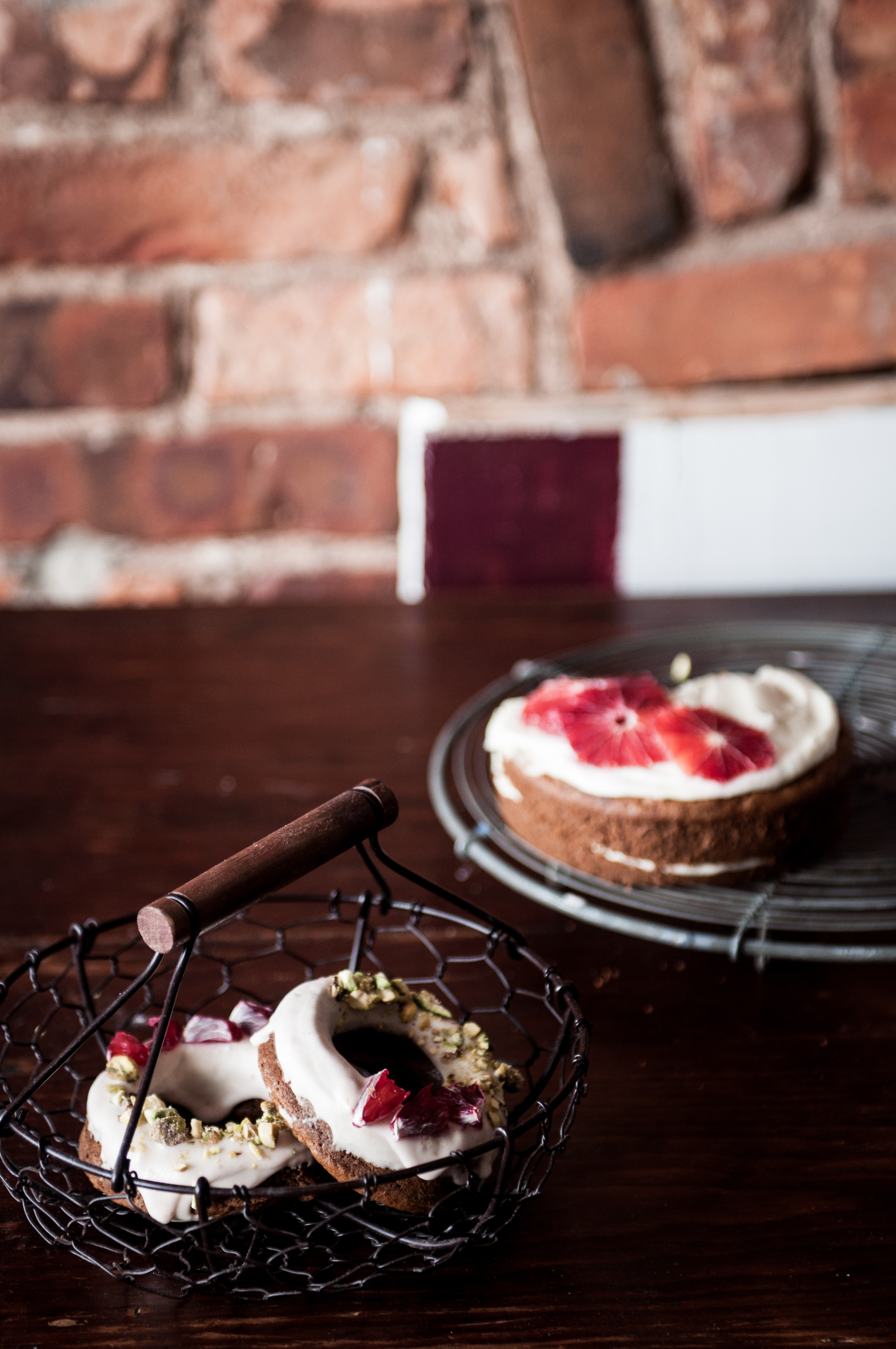Carrot cake is quite popular in my house. Consequently, several variations of it feature on this blog as well like frosted layered cakes to mini cakes to cup cakes and more. But, none of them have been gluten free, well, because I did not need to. I need to now.
So, recently, when the desire to have carrot cake set in again, it was the perfect opportunity to test how the recipe work when the chemistry of flour ingredients are changed on their head. Fortunately, I struck gold with the first recipe I tried and it was also the one that had worked best for regular flour and has been particularly popular with readers.
I have always maintained that substituting regular with gluten free flour is relatively easy in baked goods that do not need kneading or rolling. The primary issue you would face in outright substitution is that the resulting cake comes out rather dry and crumbly. In some cases, you may also need to increase the fat ratio in the fluid content, either oil or egg yolk or yogurt to achieve the right moistness and longevity. Yet, as long as you understand the absorbency of replacing flours, this is easily workable.
Of course you could always use pre-packaged blends that are supposed to have been calibrated to mimic the qualities of a regular all wheat flour. However, barring Shauna's mix, I do not know of any other store alternative that does not additives and few other obscure chemicals to either stabilize or create a gluten-like texture in the resulting product. So, I often hesitate to use these, even though I do have a back up of Dove's Farm flour from the UK, the one I used here.
Also, when you buy a blend, unless you use the same brand every time, each has its own unique composition and variety of flours. This means that the recipe will need to be tweaked every time. If you use a homemade blend, you can be fairly certain of it working every time.
In general, I much prefer to make my own simple blends or use just one flour. It works very well for cakes, brownies, muffins, cup cakes, pancakes, waffles etc. I still use the same for tarts and it really works very well when used with a bit of flax seed powder or psyllium husk to create malleability.
My go to blend for sweet creations uses oats and almonds in equal parts. There are several reasons I like this particular combination. The nutty flavor of the almonds is elegant in any cake and the oats provide a good body as well as a great source of fiber. Having just two flours to contend with also makes my calibrations easier as I don't have to consider the effect of starch or any third party binding agent. Helpfully, the absorbency of both these flours are equivalent to that of wheat, making them so much more substitutable.
Most importantly, though, it is a cost thing. I find this to be a very affordable blend, since I re-purpose the pulp from making almond milk into flour. You can read how to make the milk and almond powder here. Two birds, one stone and all that good stuff!
Long story short, I was able to easily adapt this recipe for my oat-almond blend and a lack of a few other ingredients to make these delicious cake and doughnuts. I don't know if I can call them doughnuts? I simply baked the batter doughnut molds. I am not sure the nomenclature works then. I was going with cake-do-nuts. Does that make sense? Well, I may just have coined a new word. :)
Gluten Free Carrot Cake Donuts
This recipe makes one 6 inch cake or 8-10 donuts or a combination thereof.
The notes from this recipe will apply here to. Please read to more information.
If you make this into a small cake instead of donuts, bake in mold for about 25 minutes testing for done-ness at around 22minutes.
The cake will last atleast a couple of days in a closed container but the doughnuts are best eaten within the next day.
For the cake:
1/2 cup oat flour
1/2 cup almond flour (or dehydrated almond pulp)
1/2 T baking soda
1/2 tsp salt
1 cup finely grated carrots
1 eggs + 1 yolk
1/2 cup olive oil {you can just double the olive oil and skip the canola oil}
1/3 cup raw sugar
1/2 a nutmeg nut
1/2 tsp whole cloves
1 T almond milk
For the blood orange frosting:
4 oz cream cheese, softened
1/2 T almond milk
juice of 1/2 a blood orange
1/2 T raw honey
zest of one blood orange
segments of the remaining half sliced for garnish
pistachios for garnish (optional)
Preheat the oven to 350F and prepare the donut molds by rubbing the insides with butter.
Process the raw sugar and cloves into a fine powder. Mix with the sifted flours, baking soda and salt. Grate in the nutmeg into this mixture.
Make a well in the center and add all the liquid ingredients - eggs, oil, and almond milk.
Fold in the wet into the dry to make a thick batter.
Add the grated carrots and fold. The batter will loosen from the water of the carrots.
Divide the batter evenly into the molds (2/3 way to the lip) and bake for 15 to 18 mins until they are springy to touch.
Remove from molds and cool on rack. Do not touch them till they are completely cool or the frosting will not stick.
Whipping the frosting:
While the cakes cool, whip together the frosting ingredients other than the fruit and nuts (if using).
Set aside until the donuts are cool to touch.
When cooled, dip each donut into the frosting mixture to fully coat and place on a wire rack to catch the drippings.
hile still wet, sprinkle the fruit and nuts as toppings.













